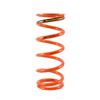While rebuilding a set of Icon Vehicle Dynamics 2.0 rear shocks for the FJ Cruiser (now discontinued), we took the chance to capture some photos and provide a deeper look into how they function.
Icon Vehicle Dynamics Digressive Shocks
Icon Vehicle Dynamics promotes the use of digressive pistons in their shocks to improve chassis control and handling. However, as we explain in our Piston Tech Article, there are potential downsides to overly digressive damping, and “digressive pistons” don’t always equate to “digressive damping.” To get to the bottom of it, we took a closer look at the IVD shocks to see exactly how they perform.
Linear Compression
IVD employs a linear compression setup with large bleed and valve disks arranged in a pyramid stack configuration. This design results in a linear damping curve, offering a smooth ride over small bumps while maintaining excellent control on larger impacts.
Digressive Rebound
Icon shocks are designed with pistons that are digressive in rebound. However, the rear FJ Cruiser shocks we opened up use techniques to make them behave more linearly. These include a low digressive preload (likely around 0.003″) and large bleed holes.
Summary
Icon Vehicle Dynamics enhances the ride and control of their digressive shocks by incorporating linear compression and slightly digressive rebound. By reducing the digressive characteristics, they effectively mitigate many of the downsides associated with fully digressive damping. The outcome is better comfort on washboard surfaces and more control over larger impacts compared to a highly digressive shock. Learn more about Digressive, Linear and Progressive piston and shock valving here.
Related Products:

















Photos very helpful for a DIY rebuilder looking for stock build confirmation- especially helpful when buying used shocks!! Greatly appreciate the author posting this blog. IVD is very secretive about their goods….